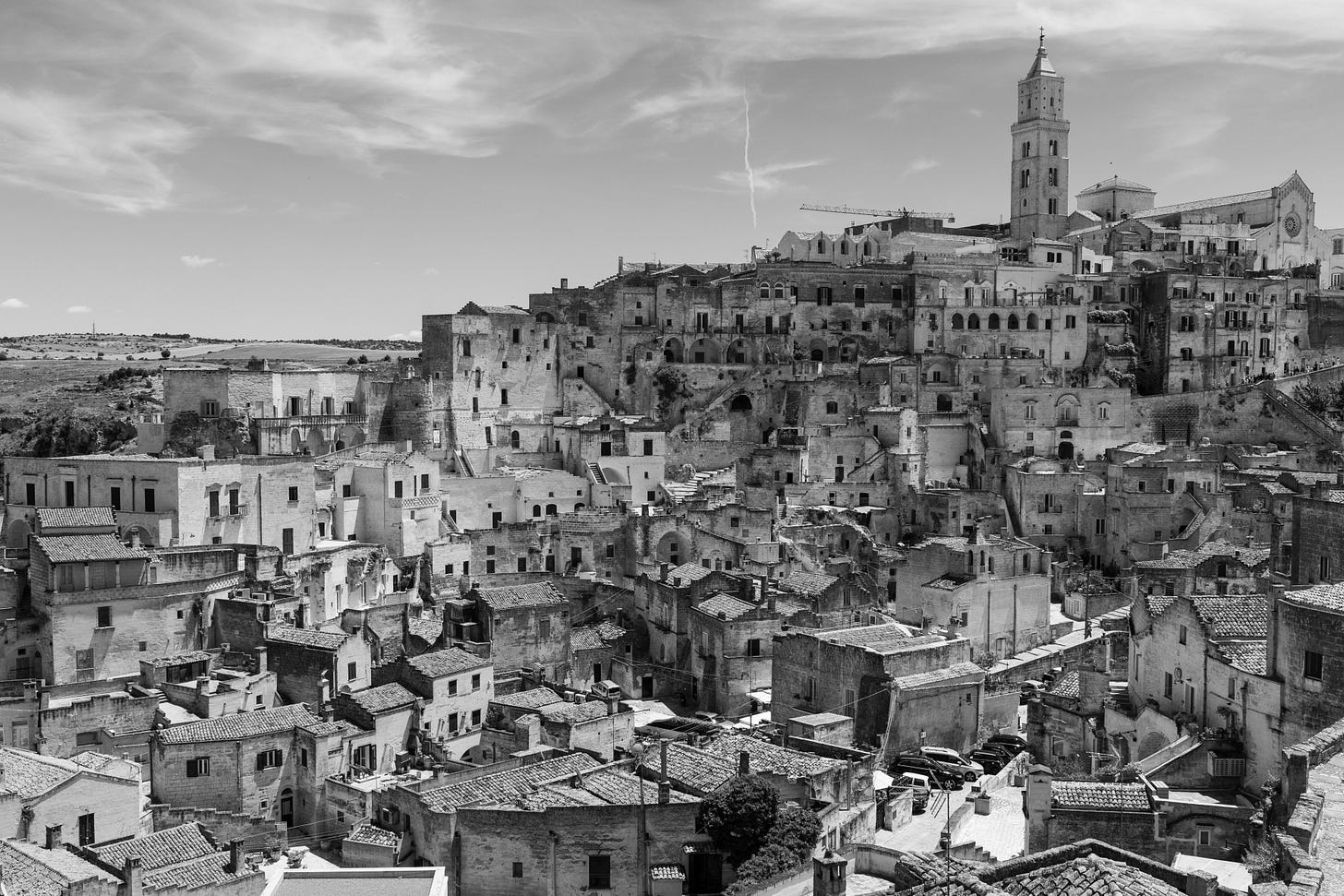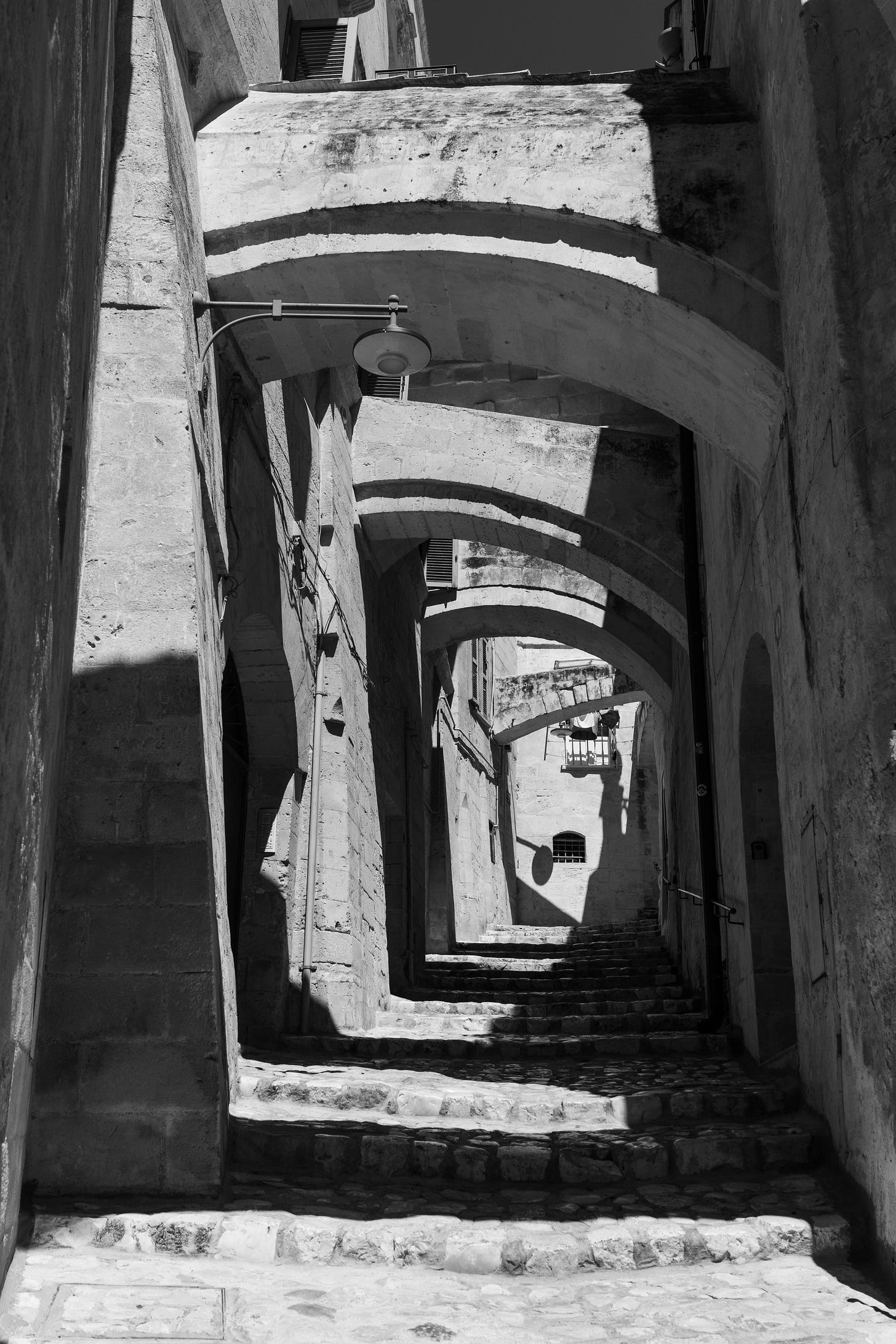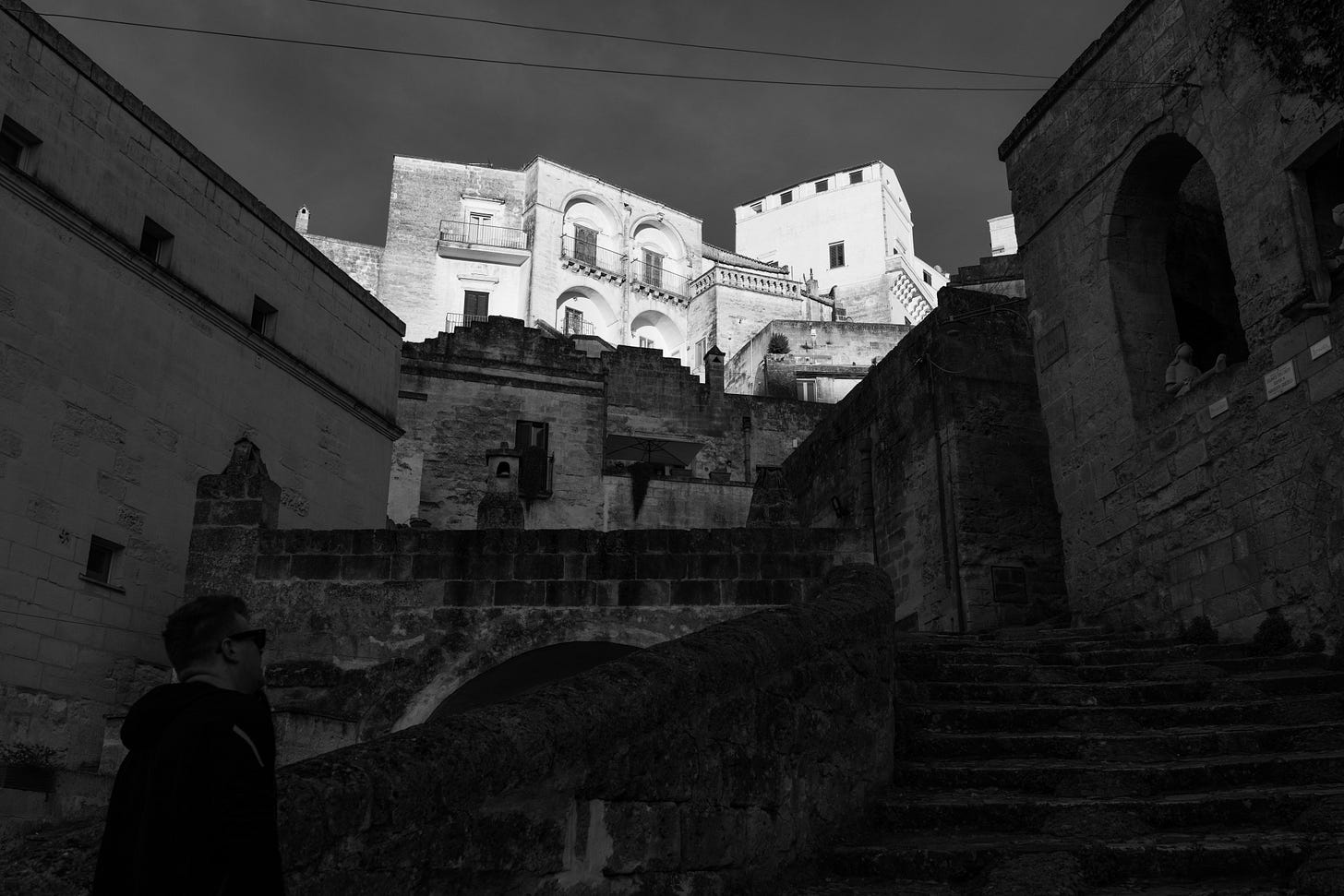Shadows of Matera
A summer vignette from Italy
Peperone crusco — a sweet chili, dried in the sun, and flash fried in olive oil. It’s crisp, light, and mild; transformed from vegetable to arid snack. It’s a dish that speaks more to process than product; a ghost of the original pepper.
The caves of Matera hold the designation of being the oldest continually inhabited settlement in the world, dating back nine thousand years. As we clambered up and down the twisting cobblestone paths, I ran the numbers: average lifespan of thirty years … nearly three hundred generations. Countless families, marriages, lives; layered atop one another, leaving behind little more than the rocky shell of this ancient place.
Elish got it wrong; there’s more than enough time to die here. I toast Oskar (saluti) as we look out over the basin of the city, one spritz away from heartburn. The shadows creep upward, chasing the light to the tips of the buildings. The daytrippers retreat to their buses as Matera descends into dusk.
Not every Airbnb has a jacuzzi inside a cave, but this one does. The gravitas falters as the shower hose whips around, nearly striking me as it sprays water across the irregular stone walls. I wrestle it into submission, my suave Bond fantasy taking a serious hit — the soak more shaken than stirred.
As morning rises, so does this iteration of the city. Laundry dries itself on balconies; alleycats follow and befriend the occasional photojournalist. Yet it feels like set dressing — a footnote to the countless chapters written here. A monument less alive than remembered, more echoes than moments.
Matera is a place to mourn, to taste the essence of what once was — stone, structure, and the weight of history. From the plaza above it may seem a touristy photo op, yet the long shadows engulf. Whether its lesson in transience strikes as consolation or unease depends on you.




